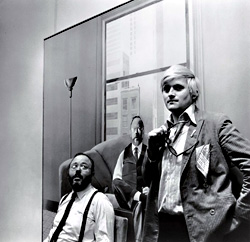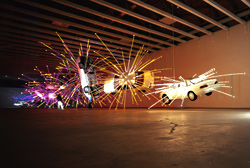Henry Geldzahler was a moonfaced, bespectacled Jewish guy who was sketched by David Hockney, sculpted by George Segal, the cigar-smoking subject of a movie by Andy Warhol, and considered by some to be one of the greatest contemporary art curators of the last century.
In 1960s New York, as abstract expressionism was starting to run its humorless course, pop art emerged like a big pop of bubble gum in the art establishment’s face—fun, cheeky, splashy, and bold. Hanging out with the new breed of art-scene provocateurs was Geldzahler (1935–1994), a young curator for the venerable, yet stodgy, Metropolitan Museum of Art. In answer to the film’s title question, curators are the ones who often get to decide what is art, and only the most visionary among them are able to identify rising talent and movements. That was Geldzahler’s gift.
His major achievement was to get the Met to clear out its galleries of 18th- and 19th-century European art (temporarily) to make way for a blockbuster show of the new wave—Warhol’s Brillo boxes, Lichtenstein’s comic-strip appropriations, Oldenburg’s absurdly giant objects—for its 1969 centenary show. This controversial exhibit, “New York Art and Sculpture 1940–1970,” featured 408 pieces of work by 43 new artists selected by Geldzahler. It helped define and legitimize postwar American art.
Along the lines of The Kid Stays in the Picture, Peter Rosen’s documentary focuses on a behind-the-scenes character whose story offers a glimpse into a specific subculture. It’s as much a Polaroid of an era as it is a portrait of the man. Consequently, at times the film seems to lose the thread of Geldzahler himself, distracted by the vivid voices and fascinating sideshows around him.
The film cuts smoothly between archival footage and recent interviews with significant artists who knew and loved Geldzahler—Hockney, Stella, Clemente—along with audio snippets from the curator, “happenings,” vernissages, and quick montages of artworks, set to a soundtrack featuring John Cage and the Velvet Underground.
Yet the doc doesn’t completely elucidate what a curator does. Nor is it “Art History 101: The ’60s”—there are too many holes in the narrative to be that comprehensive. But it’s a whirlwind trip through a vibrant era in American art history with an impressive cocktail of voices and images, and a testimony to one man’s vision and love for both art and the artists themselves.








